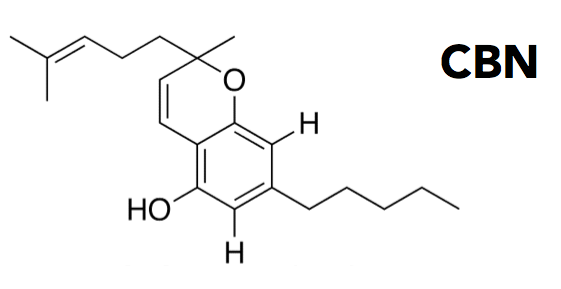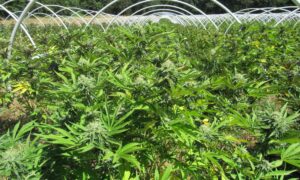There are over 100 phytocannabinoids in the cannabis plant with the two major cannabinoids THC (delta-9-tetrahydrocannabinol) and CBD (cannabidiol) as the most prominent and researched. Dr. Raphael Mechoulam, the renowned researcher who discovered the chemical structure of THC in 1964, was the first to hypothesize that phytocannabinoids work via the “entourage effect.” This means that the compounds in the plant work together synergistically to enhance the therapeutic benefits and minimize unwanted side effects. Although many understand the medicinal properties of the two major cannabinoids, let’s take a look at cannabinol (CBN), another anti-inflammatory, anticonvulsant and antibacterial medicinal cannabinoid.
Cannabinol was the first phytocannabinoid ever isolated (1896 by Wood et. al.) with its chemical structure partially elucidated by R.S. Cahn in 1932 and fully determined by two research groups in 1940 (Todd et al., and Adams et. al.). CBN was thought to be responsible for the intoxicating effects of cannabis until 1964 when Israeli researchers Drs. Gaoni and Mechoulam isolated THC and found it to be the responsible for the well-known psychoactive effects of the plant. Further research found CBN to be a breakdown product of THC oxidation, which happens as the harvested flower ages. Only traces of CBN are found in fresh flowers, with higher levels indicating aged flower.
The psychoactive and other properties of THC are a result of its ability to bind to the cannabinoid receptors found in the brain, immune system and gut of humans (and other animals). CBN was discovered to bind weakly to the cannabinoid receptor found in the brain (CB1), having about 10% of the activity of THC. CBN appears to weakly bind to the cannabinoid receptors in the immune system and gut (CB2). A fascinating finding from studies on CBN showed that in instances where the number of cannabinoid receptors was increased (such as inflammatory states), CBN had a more potent effect at the receptor. Certainly, further laboratory research into these mechanisms of actions and their implications for human health is warranted.
In an interesting study from 1975, healthy volunteers were given THC alone, CBN alone, or various doses of THC with CBN. The volunteers reported feeling the psychoactive effects with THC alone but not with CBN alone. In fact, CBN alone had no effects whatsoever. The combination of THC and CBN was found to increase the psychoactive effects.
CBN is known to have anticonvulsant properties. In an animal study, the ED50 (the effective dose for 50% of animals receiving the drug) for CBN was almost twice that of CBD, meaning CBN was about half as effective as CBD. CBN is an anti-inflammatory, although weaker than CBD in this action. CBN is also a potent antibacterial against drug-resistant staphylococcal bacteria. Other promising properties of CBN are the promotion of bone formation and inhibition of a protein that creates chemotherapy resistance.
CBN is often reported to have sedating effects, however, there is no scientific evidence to support this claim. Remember that as flowers age, the THC converts to CBN. Terpenoids, the medicinal essential oils in cannabis that contribute to the entourage effect, also change in their makeup as the harvested flower ages. It is the changes of the terpenoid profile that create the sedating effects, not CBN.
Quite recently, Senator Corey Booker of New Jersey (my home state) introduced a bill to deschedule or remove cannabis from the Schedule I category of the Controlled Substances Act. This would allow scientists to freely investigate cannabis, advancing science and allowing us to know the full therapeutic benefits of this amazing plant.
Link – Marijuana.com





































